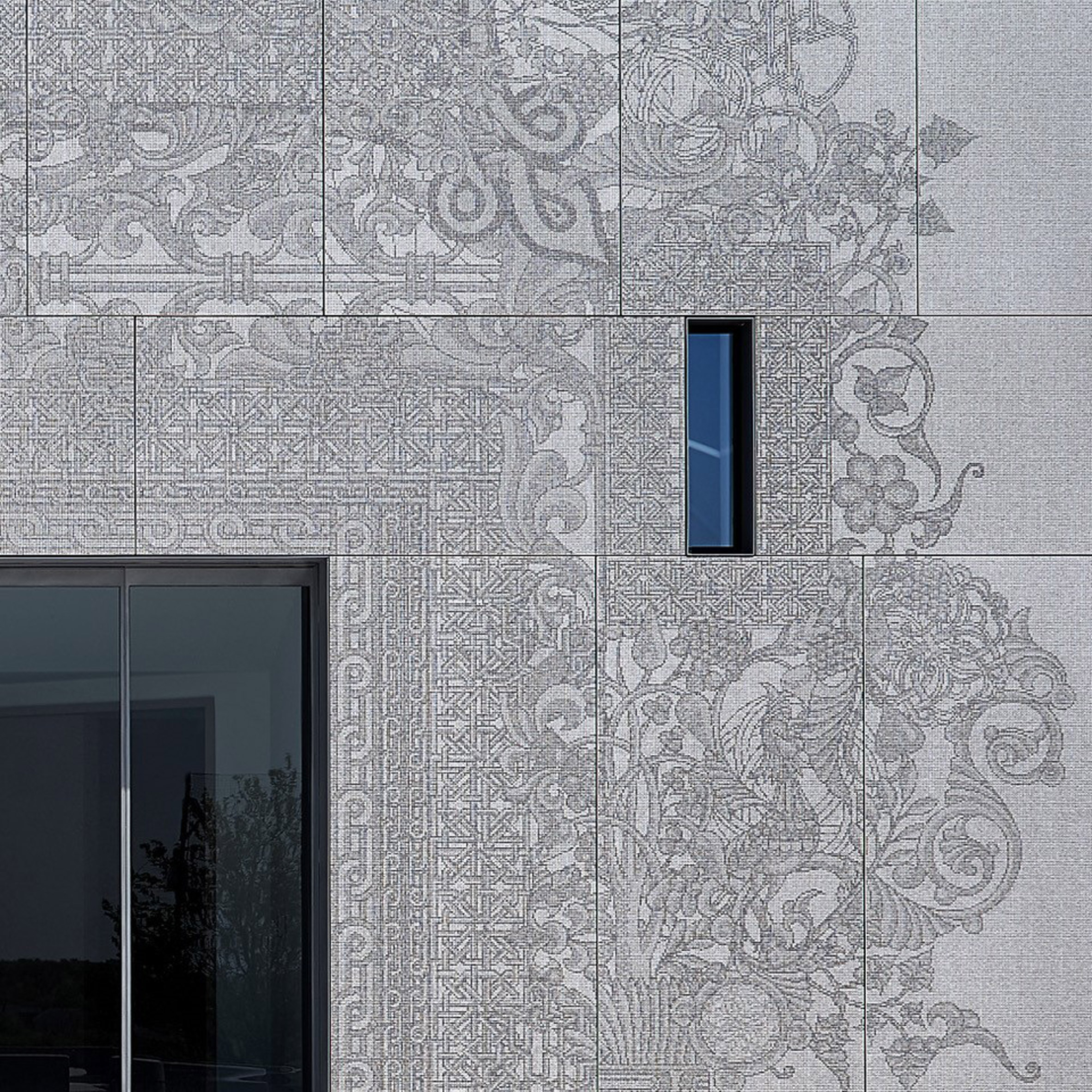[ad_1]

Promotion: Fiandre Architectural Surfaces porcelain slabs, digitally printed with 1.5 million icons, cover the facade of an Armenian church in Texas designed by New York-based architect David Hotson.
For the facade of Saint Sarkis Armenian Church in Carrollton, Texas, architect David Hotson and Yerevan-trained architectural designer Ani Sahakyan worked closely with Italian architectural surface manufacturer Fiandre to create a facade that works at a series of visual scales.

The church’s western facade that surrounds its entrance is clad with porcelain slabs depicting a traditional Armenian cross or “tree of life” with distinctive floral branching arms. This Armenian symbol of faith in the face of suffering and of resurrection and redemption serves as a memorial to the victims of the Armenian genocide.
Viewed more closely, as the visitor approaches the church, the cross is composed of interwoven botanical and geometrical motifs drawn from Armenian art. These motifs represent the bonds of ancestry and tradition that have bound the Armenian community together across centuries of challenge and upheaval.
Examined from even closer proximity, visitors will be able to see that the panels are covered with individual icons or pixels, each one centimetre in diameter.
Printed at a high resolution using Fiandre’s “Design Your Slab” or DYS printed porcelain slab system, the tiny icons – 1.5 million in total – cover the entire church facade. All of the icons are unique and derived from the circular emblems that recur throughout Armenian decorative arts.

The 1.5 million unique icons are designed to symbolise the individuals who were murdered in the Armenian genocide. The scale of the individual icons that are spread across the entire building facade is intended to make tangible the scale of this historical atrocity.
To create the facade design, a computer script was developed by architectural designer Ben Elmer to generate the icons based on ancient Armenian ornamental motifs.
These icons were scaled to fit a total of 1.5 million on the facade and were distributed according to density to form larger-scale patterns when viewed from a distance.

The motifs were printed to the exact pixel modules required onto Fiandre’s large-format, exterior-grade, UV-resistant porcelain rain screen panels.
“The facade is believed to be the first use of this technology to optically engage the viewer in a series of visual scales nested inside each other, from the scale of an entire architectural facade to the scale of individual pixels each rendered in high-resolution at the threshold of visual perception,” said Fiandre.
In addition to the memorial facade, Fiandre supplied the full range of porcelain interior and exterior floor, wall and soffit finishes used throughout the Saint Sarkis Campus.

New York-based Hotson’s design for the new church building is modelled on the ancient church of Saint Hripsime, which stands near Armenia’s modern capital of Yerevan.
Having withstood fourteen centuries of upheaval, Saint Hripsime serves as a symbol of the endurance, perseverance, and resilience of the Armenian people. The cornerstone of Saint Sarkis was laid in 2018, fourteen centuries after Saint Hripsime was completed in 618 AD.
“From this brief, Hotson developed a design that looks forward as well as backward, marrying ancient architectural and artistic traditions reflecting Armenia’s cultural legacy as the world’s first Christian nation with contemporary digitally-driven design and fabrication technologies,” explained the manufacturer.
To learn more about Fiandre Architectural Surfaces, visit the brand’s website.
Partnership content
This article was written by Dezeen for Fiandre as part of a partnership. Find out more about Dezeen partnership content here.
The post Fiandre covers Armenian church in porcelain slabs printed with 1.5 million unique motifs appeared first on Dezeen.
[ad_2]
www.dezeen.com










